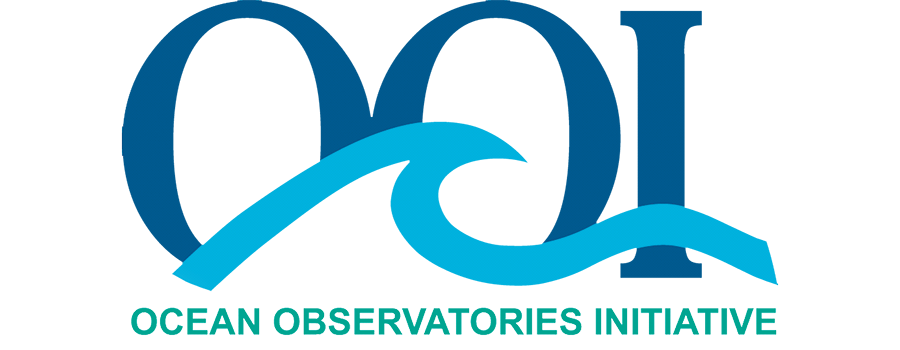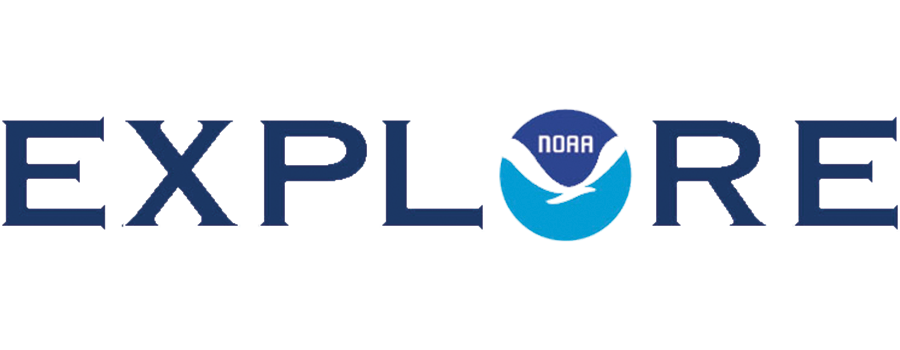NDSF Use Cases
Finding the right tools for the job
HOV Alvin
The human-occupied vehicle (HOV) Alvin enables direct, personal observations; targeted and opportunistic sampling; and in-situ experiment deployment and recovery on the seafloor and in the water column to support biological, chemical, and geological science objectives. Alvin carries a pilot and two science observers on dives that can last up to nine hours (from sunrise to sunset) and reach to 4,500 meters depth, with a conversion to 6,500 meters depth scheduled to begin in 2020.
Vent Nanoparticles (NSF)
In 2017, Alvin carried out a research project sponsored by NSF OCE to investigate the presence and composition of nanoparticles in hydrothermal plumes led by George Luther (University of Delaware). This research expedition conducted 16 dives (4877-4892) at the 9˚N site of the East Pacific Rise, primarily to sample vent fluids. Project scientists and Alvin Program engineers integrated specialized electro-chemical sensors into Alvin's electrical and data systems so that hydrothermal fluids could be analyzed in real-time to guide sampling from the sub. Fluid sampling devices were also integrated into Alvin's hydraulic system to capture and preserve fluids for further analysis on board the ship immediately following the dive. Several Scientists new to Alvin experienced their first dives and learned what goes into planning and organization required to mount an Alvin-supported expedition.
ROV Jason
The remotely operated vehicle (ROV) Jason provides seafloor-to-ship, and sometimes seafloor-to-shore transmission of video and data to sample and observe the environment, deploy and recover experiments, and manipulate marine infrastructure. Jason can be mobilized on a range of vessels that have dynamic-positioning capability and can be operated in single-body mode with a heave-compensated winch or in a two-body configuration with a depressor vehicle (Medea) attached to a standard traction winch. A Jason dive may last as a long as 4 days, with additional instruments and equipment transported to Jason and samples brought to the surface via seafloor elevator, if necessary.
Regional Scale Cabled Array Operations and Maintenance (NSF, OOI)
Jason has supported the operation and maintenance of the Ocean Observatories Initiative (OOI) Regional Scale Cabled Array on the Juan de Fuca Ridge since its upgrade for heavy-lift capability in 2016. In its new single-body mode, Jason is used to deploy, install, and recover instrument packages weighing up to 4000 pounds, connect instrumentation to the cabled network deployed on the seafloor, as well as enable observations and collect samples. With a month of sea time in 2017, Jason turned around many seafloor packages as well as instrumentation attached to moorings. The team's seafloor elevator was used to transport large amounts of instrumentation and samples to and from the seafloor, and customized latching mechanisms were integrated with the vehicle to recover and deploy packages.
NW Rota 2009 Expedition to the Mariana Volcanic Arc
An international science team that has just returned from studying an erupting undersea volcano near the Island of Guam captured dramatic new video and still images of the eruptive activity of NW Rota-1.In the video below the remotely operated vehicle Jason records the eruption and samples the eruption plume with an intake held in one of its manipulator arms. Jason is operated by Woods Hole Oceanographic Institution (WHOI) and was equipped with camera systems developed by WHOI's Advanced Imaging and Visualization Lab. The science team, led by Bill Chadwick of Oregon State University, reports that the volcano has grown considerably in size during the past three years, it appears to be continuously active, and its activity supports a unique biological community that also has grown in size during the same time period. NW Rota-1 is one of the only places on Earth where a deep submarine volcano has ever been directly observed while erupting. The expedition was largely funded by the National Science Foundation. For more information, see the cruise blog at http://nwrota2009.blogspot.com/. All video copyright by Advanced Imaging and Visualization Lab, Woods Hole Oceanographic Institution (AIVL/WHOI).
See Also
AUV Sentry
The autonomous underwater vehicle (AUV) Sentry executes pre-programmed mission to conduct repeatable, fine-scale tasks such as acoustic mapping, optical imaging, and autonomous sampling and sensing to 6,500 meters depth on dives lasting up to 23 hours. Its hydrodynamically stable design enables some of the cleanest, highest-resolution data available in ocean-bottom remote sensing, including meter-resolution bathymetric and magnetic maps and sub-meter-resolution sidescan sonar backscatter maps. Sentry can also measure water column temperature and chemistry concurrently to locate sites of hydrothermal venting or chemical seeps and can operate within tens of meters of the bottom on photographic transects or densely spaced grid surveys to produce seafloor photomosaics.
Northeast Canyons Mapping (NOAA, BOEM, USGS)
Submarine canyons on the continental shelf of the Eastern seaboard were recently investigated by several Sentry-supported expeditions to locate and identify coral habitats. Nazinski (NOAA) deployed Sentry from the NOAA vessel Pisces and collected high-resolution (one meter) bathymetric maps of selected canyons. These data were used to locate areas of hard bottom and to plan photographic surveys. Sentry also conducted photographic transects to image corals in a challenging environment of steep terrain and strong currents.
Census of Marine Life
Graduate Student Andrew Thurber and Prof. Lisa Levin (both at Scripps Institution of Oceanography) each led expeditions using NDSF vehicles in 2010, one using the AUV ABE (predecessor to Sentry) and the other using the HOV Alvin to investigate benthic communities along the active ocean margins of Chile and Costa Rica. As well as the discovery of new chemosynthetic habitats (including novel "hybrid" systems and more conventional hydrothermal vents and cold seeps), both expeditions resulted in the discovery of "new" species previously unknown to science.
Ocean Observatory Initiative
Profs. John Delaney and Deborah Kelley (both University of Washington), Dr. Robert Collier (Oregon State University) and colleagues have used the AUV Sentry and ROV Jason to conduct essential seafloor surveys, making high-resolution multibeam bathymetric maps and obtaining extensive photographic coverage of the seafloor offshore from the Pacific Northwest to plan for cable installation and placement of nodes and junction boxes in support of the Regional Cabled Network and Coastal components of OOI.
NOAA Ocean Exploration
NOAA's Ocean Exploration program has made extensive use of the ROV Jason to locate numerous sites of hydrothermal activity and even active volcanic eruption along the Marianas Arc (Drs. R. Embley & W. Chadwick, NOAA-PMEL). Dr. Tim Shank (WHOI) has used the HOV Alvin and AUV ABE (predecessor to Sentry) to locate new vents on the Galapagos Rift and in the Southern Atlantic Ocean. Most recently, NOAA's OER program has supported an ongoing project led by Profs. Chuck Fisher (Pennsylvania State University) and Erik Cordes (Temple University) using the Jason ROV to investigate deep water coral and cold seep sites in the northern Gulf of Mexico, both close to and distant from the site of the Deep Water Horizon.
Alvin and Sentry
Many seafloor processes operate across multiple spatial scales. With Alvin (or Jason), scientists can conduct detailed sampling or carry out seafloor experiments at small spatial scales. Sentry complements those capabilities by enabling sampling and sensing over larger spatial scales. Collecting samples, making observations, and deploying experiments with the two vehicles is a powerful way to achieve challenging scientific objectives. Deploying Alvin during the day and Sentry at night maximizes the use of time precious time on a research cruise to extract the greatest amount of data possible.
Seep Larval Sampling (NSF)
As with all NDSF vehicles, custom sensors may be integrated into the vehicle. In 2015, Alvin and Sentry were used by Van Dover (Duke) and Young (University of Oregon) at methane seep sites on the continental shelf to investigate the mechanisms of biological colonization and community structure. This study used Alvin to conduct detailed imaging and sampling of the chemosynthetic communities living on the methane-rich fluids emanating from the seafloor. The localized sampling at seep sites was complemented by larval sampling transects accomplished by Sentry using the newly designed SyPrid system. This system pumps fluids over a mesh to capture planktonic animals while Sentry flies structured surveys patterns. By using autonomous sampling, it was possible to evaluate the distribution of larvae horizontally and vertically around the seep sites.
Jason and Sentry
The combination of Sentry as a mapping tool and Jason (or Alvin) to carry out seafloor manipulations is an efficient and effective approach to characterize an environment and identify targets for sampling, observations, and experiment deployment. Jason and Sentry can operate concurrently and can either be deployed or recovered with the other in the water.
Mapping and sampling Havre Volcano Deposits (NSF)
Havre Volcano in the Kermadec Arc erupted in 2012 and ship-based bathymetric surveys soon after revealed the presence of new deposits on the seafloor. In 2015, Jason and Sentry were used to map and sample the new deposits and characterize the largest known deep ocean silicic eruption of the last century. Sentry mapping was conducted by Cary (Otago) and Soule (WHOI) in a series of interconnected blocks that eventually mapped the entirety of the volcano summit and caldera, an area of XX square kilometers. This revealed details of the eruptive deposits, including the location of lava domes, lava flows, giant pumice deposits, and landslides that were used to target subsequent Jason dives. In addition, chemical sensing during the mapping surveys led to the discovery of a number of young hydrothermal vents associated with the eruption. Jason dives ranging from 5 to 45 hours provided the seafloor observations to correlate mapped features with eruption processes and retrieved many rock, biology, and sediment samples from the seafloor across the caldera.



